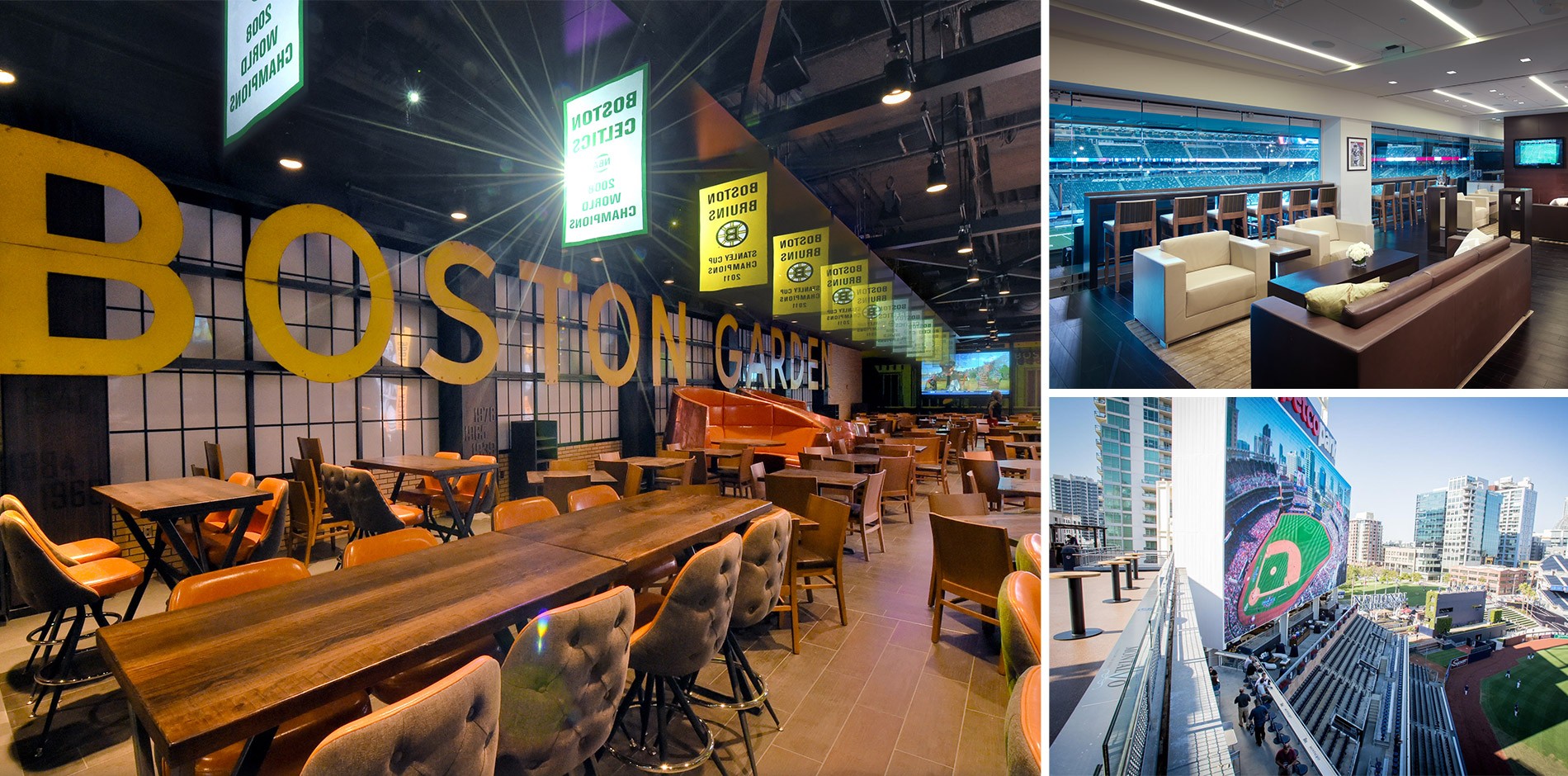Excerpt from SEAT Magazine
Over the past decade, a boom time of new stadium builds and renovations, massive capital projects have provided the industry with the opportunity to achieve two mutually beneficial objectives: maximize revenue as well as develop an in-venue fan experience that competes with the rapidly improving in-home experience.
At the heart of all of these construction projects is the desire to keep up with the changing demands of modern fans. Whereas the stadiums of yesteryear were built with the seat in mind, today’s fans have a much different relationship to their tickets.
“When many of us were young fans, the seat was a magnet,” says Terry McIntyre, Vice President of Business Development for Shawmut Design and Construction. “Now fans aren’t anchored to their seats and are looking for new places to hang.”
The need to create something unique has reached into every sport and venue type, driving the demand for 360-degree views in soccer stadiums, lounges in ballparks, and the re-imagination of iconic venues.
In this era of the bold new experience, new stadiums start out with a leg up, having the ability to build everything from the ground up. It was with the possibility of the new that Jerry Jones and the Cowboys looked at building a stadium to replace Texas Stadium in 2009.
Each year, the ability for a stadium to extend the positive reach of its experience grows. One of this year’s big leaps forward is U.S. Bank Stadium in Minneapolis, leading the way with a mobile app that provides fans with guided experiences from the front door of the stadium to their seats, and back.
New buildings get a lot of press, but in many cities, new buildings are not feasible or desired. In some places, renovations are a must, like at Wrigley Field.
At Wrigley Field, like other older venues, several challenges exist at the ballpark. First is the small footprint. Second is the historic nature of the structure that must be preserved. And finally is the historic nature of the experience that is special to so many.
Those new spaces include a home plate club, and clubs down the first and third baselines, all of which have been designed to fit under the existing bowl, allowing the building team to redirect traffic in some areas, while also maximizing precious square footage.
While the multitude of options for owners, builders, and designers can produce an almost kid-in-a-candy-store quality, the overarching challenge is to keep an eye on generating the highest level of return on investment for the time and money spent on these new builds and renovations.
As the customers’ demands have swung, much of the way that a building produces revenue has also changed. On the whole, designers and builders have seen an increase in loge boxes, flexible premium spaces, and other experiential or group spaces, a big shift from large, fully enclosed suites. These product opportunities have opened up revenue opportunities in new, and maybe unplanned, places.
To maximize revenue, the first thought on many owners’ minds is “How can we make our building a gameday destination?”. The answer sometimes lies in not how much of the game a fan can see, but in how much of an atmosphere the fan can experience.
In San Diego, Stone Brewing at Petco Park is perched on the fifth level of the ballpark with sweeping views of the area around the park and a selection of world-class craft beer that has made a view of the field irrelevant for many fans.
“The bar doesn’t have a view of the field, but it doesn’t matter,” McIntyre says. “Fans come up to the bar to feel like a member of the community.”
